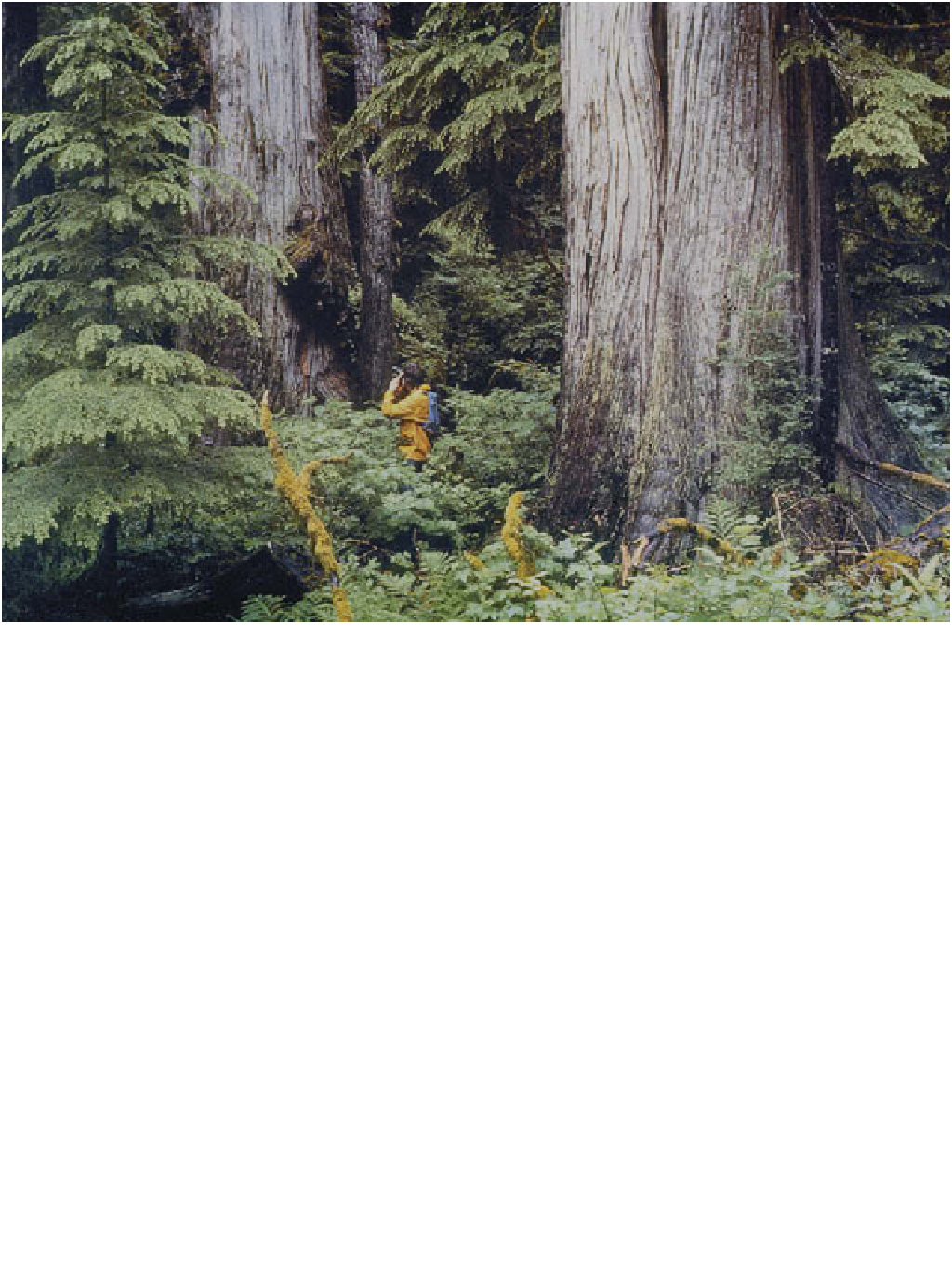Geoscience Reference
In-Depth Information
Plate 21.1
Massive western red cedar (Thuja plicata) and saplings of western hemlock (Tsuga heterophylla) in the Pacific rain
forest of Vancouver Island, Canada. This climax forest regulates energy flows to maintain maximum efficiency.
Photo: Ken Atkinson
break down the complex organic chemicals of dead
material and waste products. However, the food chain
model is an oversimplification; in reality many species can
occupy positions at several trophic levels. Thus some
species of algae and bacteria can act both as photo-
synthesizers (autotrophs) and as grazers (heterotrophs).
Foxes also can obtain part of their feed from eating
the fruits and leaves of plants (herbivore) and part by
eating herbivores such as rabbits, mice, birds and voles
(carnivore). The US ecologist Raymond Lindeman in
the 1940s laid the foundation for studying energy
relationships in ecosystems by introducing a 'trophic-
dynamic' approach based on mathematical equations for
ecosystems. Previously in the 1920s the English ecologist
Charles Elton had written about 'the pyramid of numbers'
in ecosystems. He noticed that a large number of green
plants support a smaller number of herbivores which
and for species. Other ecologists noticed that a similar
trend was evident in the total weight of living organisms
Whilst such pyramids of numbers of individuals, numbers
of species and biomass are common, they are not without
exceptions in both terrestrial and aquatic ecosystems. One
complication is turnover rate, so biomass figures may
underestimate its importance. Lindeman realized that if
organic material is looked on as a fuel or food energy
(calories or joules), then an
energy pyramid
will always
be found in nature (
Figure 21.2c
).
Whenever an ecosystem
is described in terms of a rate of energy flow through the
different trophic levels (calories per square metre per day,
cal m
-2
d
-1
, or thousands of joules per square metre per
year, kJ m
-2
yr
-1
), a pyramid shape will always result,
following the second law of thermodynamics.
Biomass is the mass of living organic material in a
specific area or ecosystem. The units are weight per unit
area (g m
-2
or kg ha
-1
or t ha
-1
or t km
-2
). Changes in
biomass from year to year indicate the amount of energy
or carbon fixed by photosynthesis and incorporated into









































